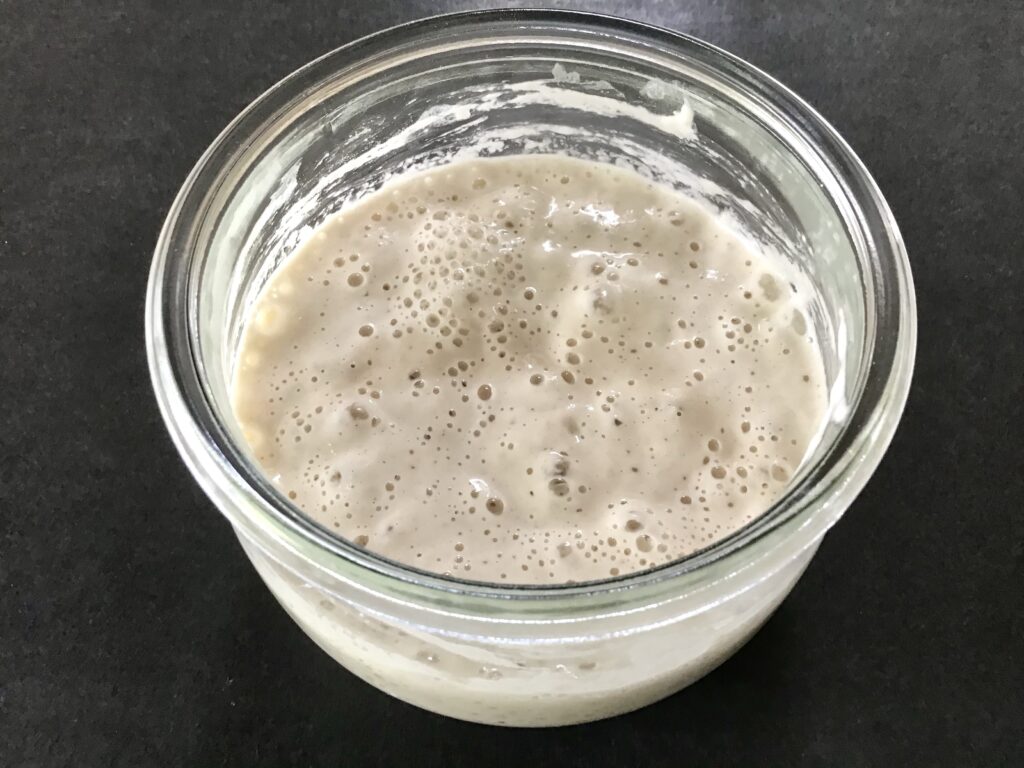
Q. Want to know how to make your starter into a super starter?
A. Get to know it, intimately.
Before I explain… No one else’s starter is like yours; only yours lives in your kitchen, which is all part of what makes it unique. Add in the flour you use, the water, your management of it, and it is uniquely and solely yours. And to get the best out of it, you need to get to know it. You need to know every nuance of your little bowl of magic.
Here’s my tips and insights:
🌟 I have always used the same flour in my starter – you may see me play around with other flours or different starters but I’ve either made them from scratch or I’ve used a spoonful of my Star to experiment with – I never ever risk or experiment with my precious, loyal, consistent starter.
🌟 I know exactly what part of my kitchen my starter likes to sit in once fed.
🌟 I know which part of the fridge it likes best to sleep in.
(to answer the question about the best place to store your starter in the fridge: if it keeps getting hungry in the fridge, it may be in a part of the fridge that is too warm, or too near the front so that it gets warmed up each time the fridge is opened. The best place in the fridge will be where your starter remains still, gets thick, not frozen, and not hungry.)
🌟 I always feed her with equal WEIGHTS of flour and water, never volume.
How do I recommend you do that?
🌟 Be consistent.
🌟 Develop a good relationship with your starter.
🌟 Watch and learn how it looks, behaves and smells when it’s happy and healthy. This will help you to detect if there’s any issues or changes.
🌟 Take photos if it helps.
🌟 Give it the best food you can.
🌟 Use the best quality flour you can for your starter.
🌟 Test your tap water; mine loves tap water, yours might too; if you want to test it, take out a small portion of your starter and place it in another jar and feed it with your tap water and see what happens. For some people, tap water gives their starters the boost they’ve been lacking.
🌟 Keep it in a good environment, scrape down the jar after each feeding. Keep its home tidy and safe.
🌟 Learn it’s personality.
🌟 Do. Not. Compare. You really will be wasting your time if you compare your starter to others; they don’t live in your kitchen or use your flour or water so why would you think they should be the same?
🌟 Stop reading everything you find online, you’ll drive yourself crazy. Learn about YOUR baby and you’ll fly.
🌟 Don’t focus on bubbles. Not all starters are bubbly, and they don’t need to be; different flours produce different looking starters, in particular, white starters may have a bubbly surface, whole grain starters rarely have a bubbly surface, but they have wonderful texture throughout instead.
🌟 Give it what it needs: feed your starter with equal weights of flour and water too, UNLESS it needs it to be different, and here’s why it’s important to know your starter: by watching and noting it’s consistency and behaviour, you will be able to see if there’s any changes that you need to respond to. If it’s getting a little thin, use less water in the feed next time. If it’s getting a little slow, give it more time, or some warmth. If it’s give really flat and the consistency has become smooth like paint, try feeding some portions with a new/fresh bag of flour.
🌟 And always always make notes. 🌟
Log the following to build a picture of how your starter behaves:
1. The starting consistency before feeding
2. How it smells and looks
3. What time you feed it
4. What you feed it with
5. Exact flour you used
6. Exact water you used
7. Exact quantities you fed it with
8. The room temp at the time of feeding
9. What time it fully responding ie had grown to double in size
10. How it behaved in your dough.
Use this log to fully understand how your starter behaves throughout the year and you will benefit so much for taking that extra bit of time.
The biggest way to know if your starter is working well is if it lifts and grows your dough. If your dough grows, your starter works. Don’t focus on looks, focus on power and the job it does.
I hope this helps, you know where I am if you need me xx

How should my sourdough starter smell
There is no ‘should’ they are smell differently. How does yours smell?
When you disgaurd… your throwing away or restarting another batch each time to have several batches?
A recipe would help
When I discard I keep it to use in fast/discard recipes.
The links are all on your left 👍🏻
https://foodbodsourdough.com/how-to-make-a-starter/